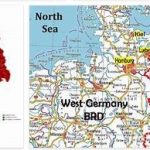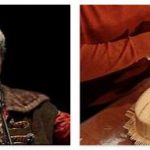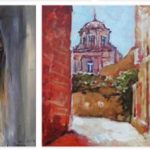Only at the end of the century. 6 ° in Germany there was an autonomous activity of coinage, in the cities of Cologne, Mainz and Trier; the production of Roman mints is instead attested starting from the middle of the 3rd century. In minting centers such as Trier, Speyer, Worms, Mainz, Andernach, Bonn and Cologne, Trentino golds were made, which on the obverse show the uncertain imitation of Roman coin models minted in the 13th century. 3rd and 4th by the two usurpers Tetricus and Magnentius. The denarius, a silver coin resulting from a stabilization that took place after several reforms desired by Charlemagne (768-814), was coined in the 13th century. 8th and 9th exclusively in mints west of the Rhine (Speyer, Worms, Mainz, Trier, Bonn, Cologne). Simple images with legend were replaced after the reform of 792-793 by a cross-monogram. In the’ 812 appeared for the first time on the obverse the portrait of the sovereign, borrowed from ancient models, combined with the representation of a columned temple on the reverse. For the first time, Frankfurt is also listed among the cities with the right of minting. Under Louis the Pious (814-840) the Corvey and Regensburg mints were activated. Ludovico’s gold coinage of 816-819, probably appeared in Aachen at a slightly earlier time, was again inspired by the Ancient. At the end of the century 9 ° the quality of the style was considerably lowered. In the wake of the tradition of the Carolingian monetary system the Pfennig in silver weighing gr. 1.40 ca., initially with simplified images and legends (the name of the city in Cologne, a temple in Regensburg, or a cross surrounded by four spheres). The images of the sovereigns appeared for the first time only in the century. 10th in Strasbourg. Through the granting of the right of minting, both lay and ecclesiastical princes began to mint their own currency. A massive minting activity took place in the Goslar region around 985-990, with the use of silver from Rammelsberg (Pfennig by Otto Adelheid). Alongside the central mints of Cologne, Mainz and Regensburg, whose coins were imitated in the less important minting centers, there were an increasing number of coinage centers linked to the figures of princes. Up to the year 1000 there is evidence of the existence of one hundred and forty-three (or perhaps one hundred and sixty-seven) mints. During the century 11th there was a considerable development in the artistic sense of numismatic art: on the one hand the images of the king and princes took on more individual characters, on the other there were depictions of saints, of architecture, the hand of God and the cross; the differences in style between region and region turned out to be more and more marked. 10 ° and 11 ° comes from treasures found in the Baltic regions, in particular in Scandinavia – especially in Gotland in Sweden -, in Russia and in Poland, and this confirms that even in this era money was used to trade on great distances.
According to LAWSCHOOLSINUSA, the trend, already outlined in the century. 11 °, a regional diversification in the coinage of the Germanic area led in the following century to a further division: the secc. 12th and 13th were the era of money as a regional currency. At the base of the system was once again placed the silver Pfennig, divided into obolo (half Pfennig) and quadrant (a quarter of Pfennig). The heavy two-sided Pfennig (e.g. in Rhineland, Westphalia, Franconia, Bavaria) was opposed to the light single-sided (hollow) one, the so-called bracteate (e.g. in Lower Saxony, in the Harz region, in Saxony, Thuringia, Hesse, Swabia, in the area of Lake Constance). The bracteats, whose large number of images were based on the regular out-of-circulation coins (renovatio currencye), developed from the beginning (c. 1140) and during the second half of the century. 12 ° an iconographic heritage of high artistic value. The number of ticks rose to nearly eight hundred. With the example of Lübeck, other cities also began to have autonomous mints. The Heller of Schwäbisch Hall in the course of the century. 13 ° replaced numerous regional currencies. The creation of the gold florin in 1252 in Florence and that of the big tornese in 1266 in France had repercussions in Germany starting from the 14th century. The Gulden, in imitation of the gold florin, in particular the Rhenish ones, and the big ones worth more than one Pfennig (big from Tours, Prague, Meissen) determined the currency; the regional Pfennig was devalued and simply retained the undervalued role. In monetary associations-leagues, such as eg. that of the Rhenish electorate of 1386, more sovereigns with the right of minting, but also cities, such as for example. those of the Sorbian association-league, of 1373-1379, imposed the minting of coins that had the same value. In the cities, starting from 1370, to protect against foreign money that had a lower value, it was counter-punched. In the image depicted on the coin of the time, a high stylistic level was sometimes reached.








